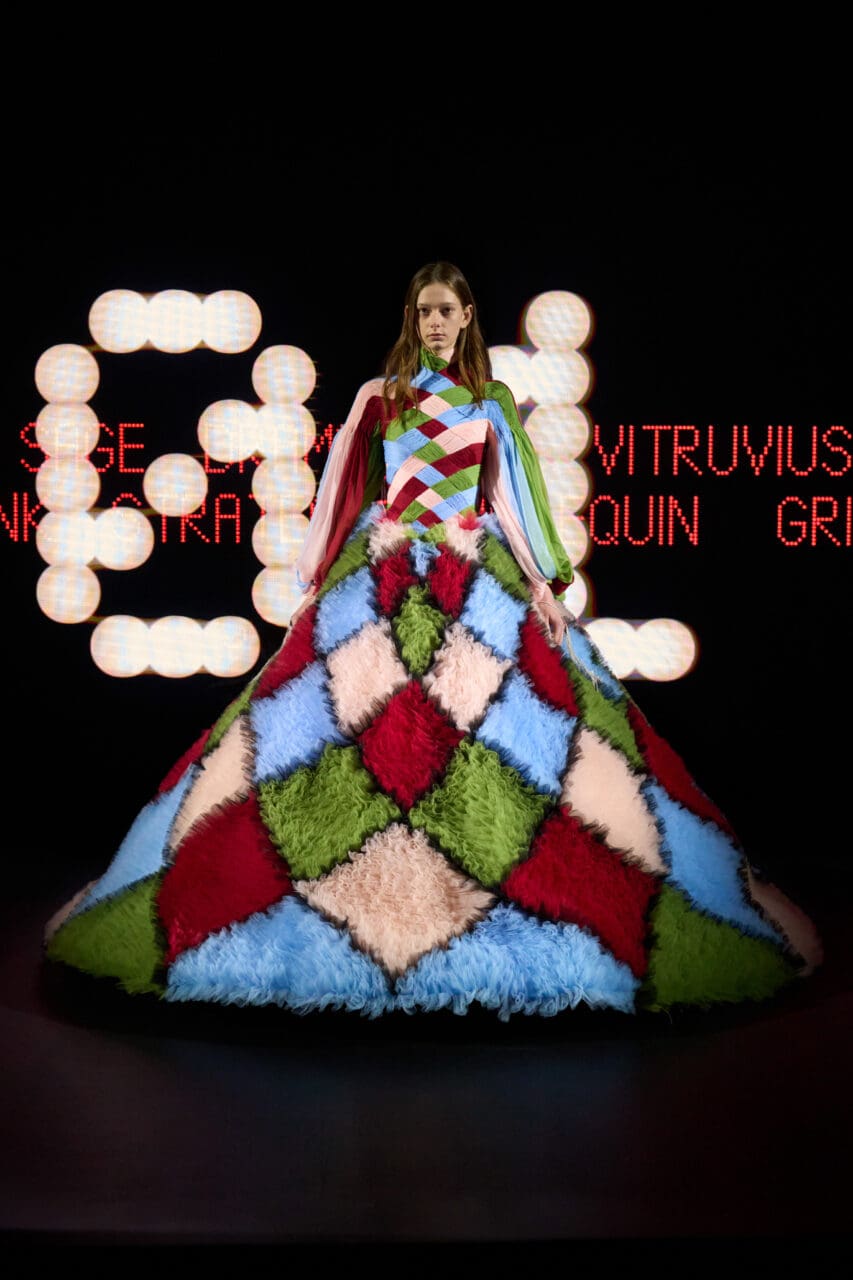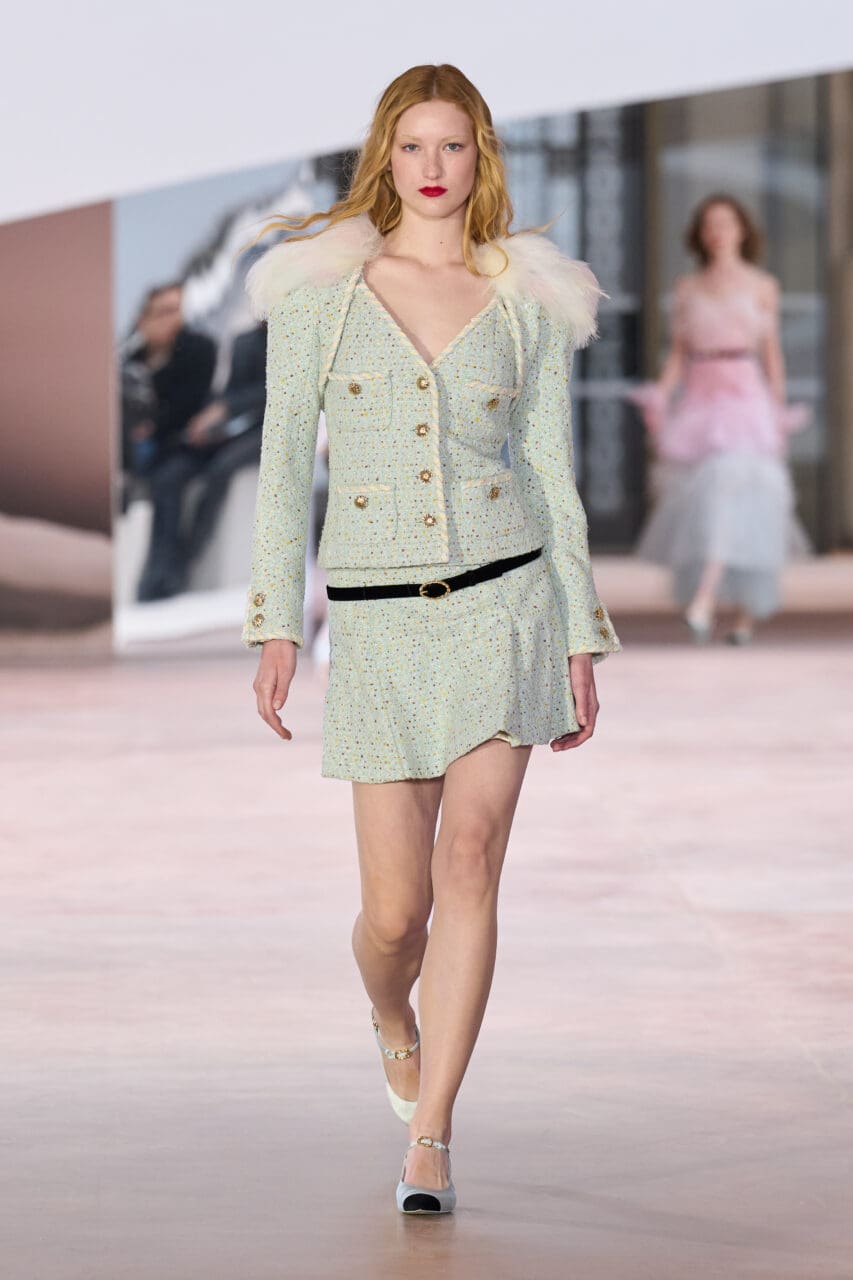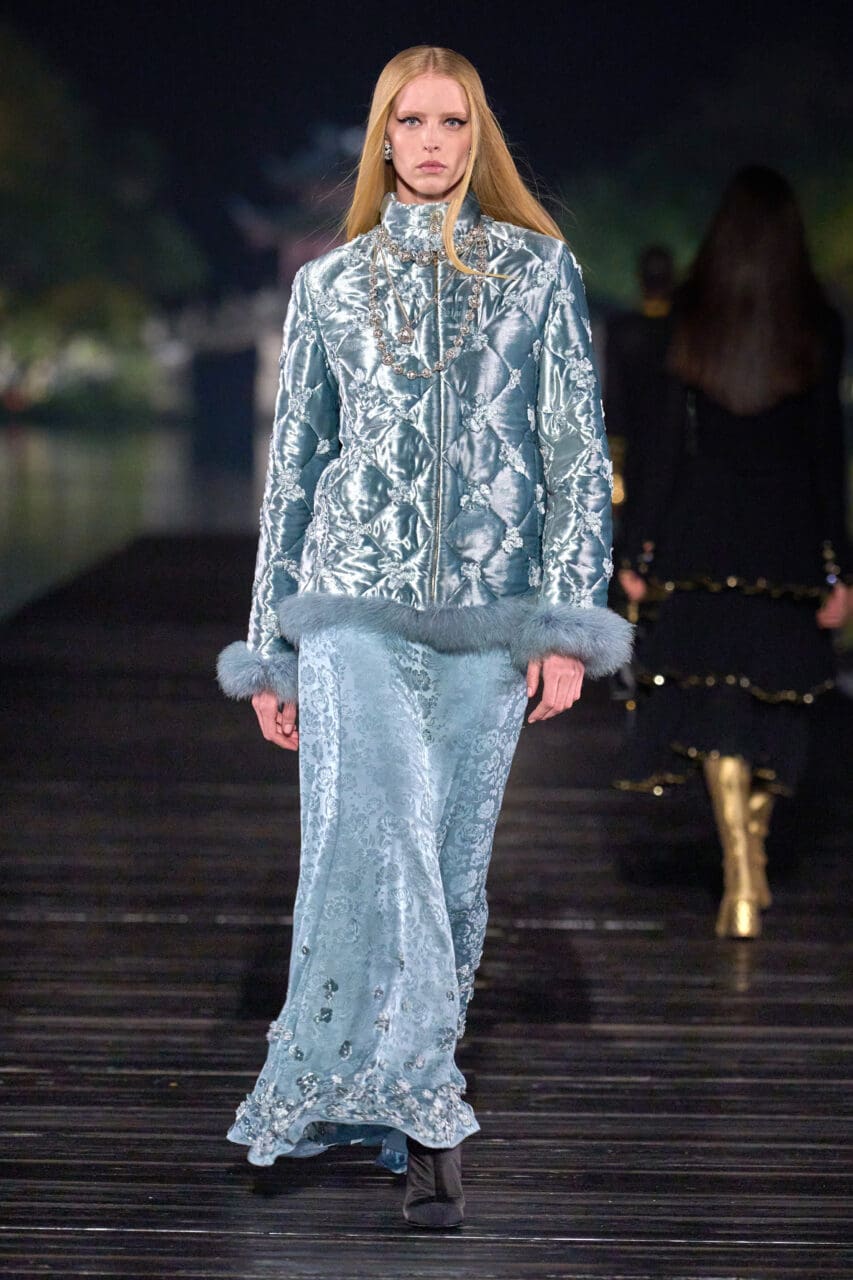Really, the sensation of watching haute couture lies in the wonder of thinking, Wow, how did they make that? Daniel Roseberry was talking about working in that vein minutes before his Schiaparelli show. He had named the collection Icarus, not because there were any wings or suns in the show, but because the Greek myth denotes the ambition to fly higher. Or in the case of fashion, to push it even haute-r.
“I think that, to me, it’s always about challenging the expectations of what makes a memorable moment—because we’ve done the break-the-internet thing,” he said. The Icarus story famously doesn’t end well, but it does speak about the drive to take risks, to prove you can outdo yourself. In Roseberry’s mind this season, that meant assigning himself a set of intellectual and technical risks: “I wanted to challenge this idea that to be modern, it must be simple.” His aim: making clothes that have “antiquity and modernity at the same time.”
Well, you could argue that corseting can never be on the side of modernity, though currently—concurrently with the dramatic backsliding in women’s rights all over the world—it is being revived to an extreme that hasn’t happened since the 1950s. (Although it’s complicated by the fact that the “snatched” waist is also turning up in menswear now.) Whatever the psycho-political reasons that may lie behind it, Roseberry made corseting, and the torso in general, the fulcrum of his collection.
And disapprove of it or not, the engineering behind it was stupendous. At some points, the angled jutting of hips, planed off into arcs—as in a white bodice worn with black pants—looked like a futurist sculpture. There was invisible padding going on that shaped the hips of dresses into anatomically impossible half-domes. The sensational sharp-angled geometry of the corset under a draped tulle dress practically turned Maggie Mauger into half-woman, half– perfume bottle. When it came to Kendall Jenner, the lines of the boning that ran from bra level to thigh on her dress almost gave her the silhouette of an Art Deco landmark building.
Under Roseberry, Schiaparelli has developed the ability to make clothes that have the smooth, seamless, undulating appearance of car bodies or airplane fuselages. It reached the I-can’t-believe-my-eyes level at the sight of a wavy 3D peplum on a strapless bustier; a one-shoulder velvet dress with a side that was all stiff, scrolled flounce; and especially on a cream cutaway tail jacket. Vestigially pleated over the breast like a Surrealist Schiaparelli rib cage, it had a rounded tail that jutted out almost like a piece of aeronautics engineering.
Apparently, these amazing techniques had been hand-molded in laborious old-couture methods, somehow with the aid of neoprene and Ultrasuede. Whatever went into it, that was a stunning modern couture technique owned by the house.
We haven’t mentioned the “antiquity” part of Roseberry’s inspiration yet. That came out of a box of early-20th-century Lyons couture ribbons he’d found. The last dress—another corseted one—was made from a length of brown moiré silk ribbon from that box. At another point in the show, there was a slim dress made from vertical tiers of ribbon, which shimmied and quivered as the model walked.
Light and airy, it had a slight echo of a 1920s flapper dress about it, yet you’d also never quite seen anything like it. Haute couture is at its best when it looks to the past and then transforms it into something that’s never been done before. Icarus or no, Roseberry’s collection really took off in the moments when he did that.
Editor
Sarah MowerCredit
Lead image: Courtesy of Schiaparelli





